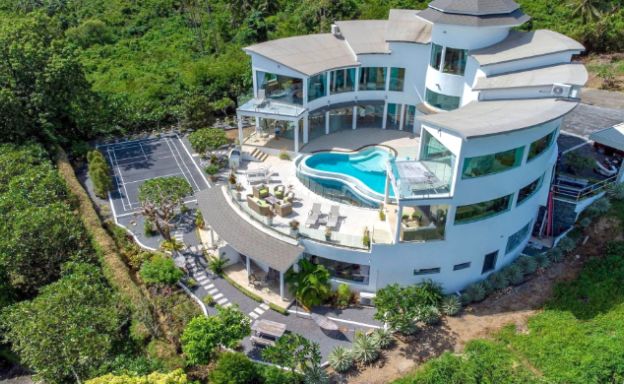
The allure of luxury beachside living has grown worldwide, drawing buyers and investors to coastal destinations for breathtaking views, vibrant communities, and substantial investment potential. Driven by rising affluence, remote work trends, and the desire for second homes, demand for high-end waterfront properties continues to surge. This article examines the factors that influence the market, what defines a truly luxury property, investment opportunities, and key considerations for navigating the dynamic world of high-end coastal real estate.
An Overview of Beachside Luxury Real Estate Trends
The allure of owning a luxury home near the shoreline has only grown in recent years, with discerning buyers and investors flocking to coastal destinations worldwide. Sparkling ocean views, a relaxed lifestyle, and access to vibrant beachside communities draw individuals who are not only seeking extraordinary living spaces but also attractive investment opportunities. For those considering Mexico’s sun-drenched coastlines, connecting with a trusted professional like Cabo real estate agent Joe Taylor can provide essential guidance, local expertise, and access to exclusive properties that fit a range of preferences. Global demand for luxury coastal homes is on the rise, driven by remote work, growing wealth, and the allure of second homes in scenic locations. Beachfront properties are especially valuable due to their rarity and lifestyle benefits, consistently outperforming inland properties in both rental income and long-term appreciation. Investors are increasingly prioritizing exclusivity, amenities, sustainable design, and year-round livability when selecting coastal residences.
Key Factors Affecting Beach Home Values
The ultimate price of a luxury beach home is often a careful calculation based on location, exclusivity, and prestige. Not all beachfronts are created equal; the cachet of a specific cove or stretch of coastline can command significant premiums. Gated communities, private beaches, and proximity to high-end resorts or golf courses further drive up property values. Amenities such as infinity pools, private docks, and comprehensive security systems are not simply desirable; they are often expected in many prestigious locales.
Seasonal demand also plays a significant role in determining value, with prices peaking during periods of high travel and declining during periods of low travel. Economic factors, such as currency fluctuations and local tourism trends, can influence both purchasing power and rental rates.
What Makes a Beachfront Property Truly ‘Luxury’?
Not every home on the sand qualifies as ‘luxury’. What sets top-tier coastal residences apart are features such as bespoke architectural styling, the use of rare materials, and the generous integration of outdoor living spaces. Modern luxury homes often prioritize privacy, featuring lush landscaping, strategic site orientation, and advanced security measures, according to Investopedia. Sustainability is increasingly at the forefront, with green roofs, energy-efficient systems, and native landscaping appealing to environmentally conscious buyers. State-of-the-art amenities, including home automation, wellness suites, and direct beach access, ensure comfort and convenience without compromise.
Global Hotspots for Luxury Beach Home Investment
Certain parts of the globe are magnets for luxury beachside investment. Markets like the French Riviera, the Maldives, and the Caribbean islands continue to dominate. Still, newer contenders, including Mexico’s Los Cabos, Portugal’s Algarve, and parts of Southeast Asia, are rapidly rising in popularity. These destinations offer outstanding value compared to more established markets, with investors attracted by favorable tax regimes, improved infrastructure, and a robust hospitality sector. Recent data indicate strong demand from U.S. and European buyers seeking second homes and vacation rentals abroad, with preferences shifting toward communities that blend luxury with authenticity.
Risks and Considerations for Investors
Investing in luxury beachfront properties isn’t without risk. Coastal markets are susceptible to natural disasters, including hurricanes, erosion, and flooding—factors that heighten market volatility. Insurance premiums and coverage restrictions can differ dramatically between one municipality and another. Prospective buyers must also pay close attention to local building codes, zoning regulations, and environmental protections that may affect renovations or expansions. In many regions, foreign ownership is subject to additional scrutiny and varying legal stipulations.
Return on Investment: Potential and Pitfalls
Luxury beach homes are attractive for their potential to generate impressive rental yields, especially in areas with year-round tourism. However, maintenance costs, property taxes, and seasonality can impact profitability. The tax implications for non-resident owners and the complexities of managing vacation rentals abroad add extra variables to the mix. Compared to inland luxury markets, the inherent value of limited coastline assets means that appreciation rates can be significantly higher; however, these assets also tend to be less liquid, especially during economic downturns.
Tips for Finding the Right Luxury Beach Home
Thorough due diligence is crucial. Prospective buyers should carefully vet locations for safety, community stability, and future development plans. Evaluate which amenities—such as private moorage, wellness facilities, or neighboring golf—align with lifestyle and investment goals. Seek input from regional specialists who are intimately familiar with local regulations and market nuances. Utilizing experienced professionals for inspections, legal reviews, and negotiations can help buyers avoid potential pitfalls and secure properties that retain their value over time.
The Future of the Luxury Beach Home Market
Looking ahead, eco-conscious design and sustainability will shape the next wave of luxury coastal development. Buyers, especially from younger generations, are increasingly prioritizing wellness-oriented features, green building certifications, and flexible living/workspaces—trends accelerated by the global shift toward remote work. As climate concerns grow, so will innovation in resilient construction and flood mitigation technologies. Ultimately, the luxury beach home market will continue to evolve, driven by buyer demand for unique, sustainable, and lifestyle-enriching properties around the globe.